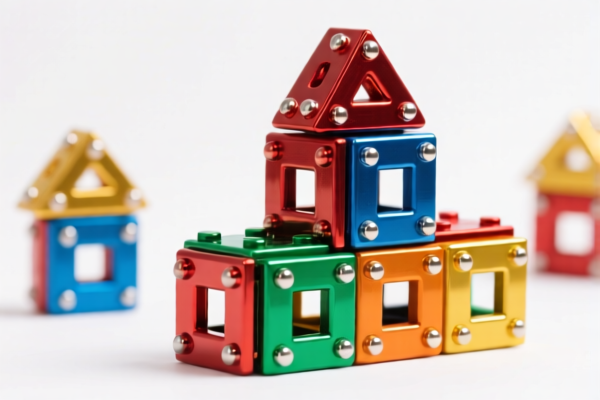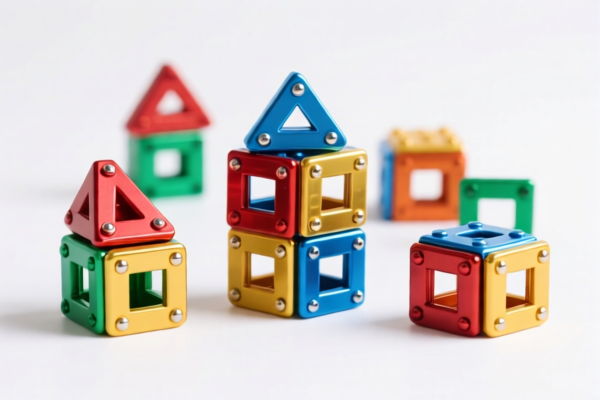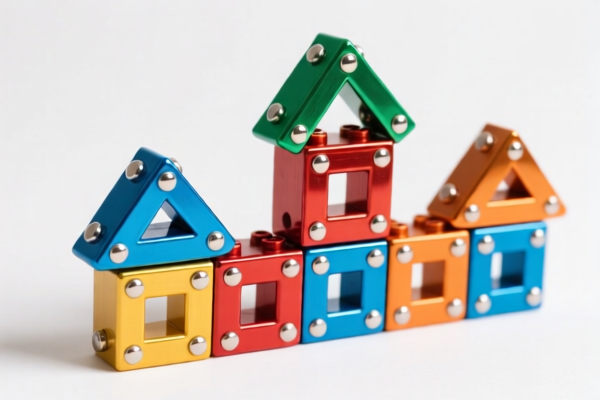| HS Code | Official Doc | Tariff Rate | Origin | Destination | Effective Date |
|---|---|---|---|---|---|
| 3926909989 | Doc | 42.8% | CN | US | 2025-05-12 |
| 3901909000 | Doc | 61.5% | CN | US | 2025-05-12 |
| 6810110010 | Doc | 58.2% | CN | US | 2025-05-12 |
| 6810110070 | Doc | 58.2% | CN | US | 2025-05-12 |
| 7326908688 | Doc | 82.9% | CN | US | 2025-05-12 |
| 9503000071 | Doc | 30.0% | CN | US | 2025-05-12 |
| 9503000073 | Doc | 30.0% | CN | US | 2025-05-12 |




Okay, let's break down the HS codes you've provided for "BUILDING BLOCKS". I'll give you a structured analysis, explaining the classifications and potential implications.
Understanding HS Codes – A Quick Primer
HS codes (Harmonized System codes) are internationally standardized codes used to classify traded products. They determine the import duties and taxes applicable to your goods. The first 6 digits are generally standardized globally, while the last digits can vary by country.
Here's a breakdown of each HS code you provided:
1. 3926.90.99.89 – Other articles of plastics and articles of other materials of headings 3901 to 3914: Other: Other Other
- 39: Plastics and articles thereof.
- 26: Other articles of plastics and articles of other materials.
- 90: Other.
- 99: Other.
- 89: Other.
- Tax: Base Tariff: 5.3%, Additional Tariff: 7.5%, Post-April 2, 2025 Additional Tariff: 30%. Total Tax: 42.8%.
- Notes: This code is quite broad. It covers plastic building blocks not specifically captured elsewhere. Please verify the exact plastic composition and intended use to ensure this is the correct classification.
2. 3901.90.90.00 – Polymers of ethylene, in primary forms: Other: Other: Other
- 39: Plastics and articles thereof.
- 01: Polymers of ethylene, in primary forms.
- 90: Other.
- 90: Other.
- 00: Other.
- Tax: Base Tariff: 6.5%, Additional Tariff: 25.0%, Post-April 2, 2025 Additional Tariff: 30%. Total Tax: 61.5%.
- Notes: This code applies to raw ethylene polymers used in the manufacturing of building blocks. It's unlikely to be the code for finished building blocks themselves.
3. 6810.11.00.10 – Articles of cement, of concrete or of artificial stone, whether or not reinforced: Tiles, flagstones, bricks and similar articles: Building blocks and bricks Containing by weight more than
- 68: Articles of stone, plaster, cement, asbestos, mica or similar materials.
- 10: Articles of cement, concrete or artificial stone.
- 11: Tiles, flagstones, bricks and similar articles.
- 00: Other.
- 10: Building blocks and bricks with specific composition (high magnesia content).
- Tax: Base Tariff: 3.2%, Additional Tariff: 25.0%, Post-April 2, 2025 Additional Tariff: 30%. Total Tax: 58.2%.
- Notes: This is a very specific code for building blocks made of cement/concrete with a high magnesia content (over 70%) and bonded with resin/pitch. You'll need to confirm the exact chemical composition of your blocks to see if they meet these criteria.
4. 6810.11.00.70 – Articles of cement, of concrete or of artificial stone, whether or not reinforced: Tiles, flagstones, bricks and similar articles: Building blocks and bricks Other
- 68: Articles of stone, plaster, cement, asbestos, mica or similar materials.
- 10: Articles of cement, concrete or artificial stone.
- 11: Tiles, flagstones, bricks and similar articles.
- 00: Other.
- 70: Other building blocks (not meeting the specific criteria of 6810.11.00.10).
- Tax: Base Tariff: 3.2%, Additional Tariff: 25.0%, Post-April 2, 2025 Additional Tariff: 30%. Total Tax: 58.2%.
- Notes: This is a more general code for cement/concrete building blocks that don't meet the high-magnesia criteria of 6810.11.00.10.
5. 7326.90.86.88 – Other articles of iron or steel: Other: Other: Other Other
- 73: Articles of iron or steel.
- 26: Other articles of iron or steel.
- 90: Other.
- 86: Other.
- 88: Other.
- Tax: Base Tariff: 2.9%, Additional Tariff: 25.0%, Post-April 2, 2025 Additional Tariff: 30% (Steel/Aluminum products have an additional tariff of 25%). Total Tax: 82.9%.
- Notes: This code applies to building blocks made of iron or steel. Confirm the material composition.
6 & 7. 9503.00.00.71 & 9503.00.00.73 – Tricycles, scooters, pedal cars and similar wheeled toys; dolls’ carriages; dolls, other toys; reduced-scale (“scaleˮ) models and similar recreational models, working or not; puzzles of all kinds; parts and accessories thereof “Children’s productsˮ as defined in 15 U.S.C. § 2052: Other: Labeled or determined by importer as intended for use by persons: Under 3 years of age & 3 to 12 years of age
- 95: Toys, games and sports equipment.
- 03: Tricycles, scooters, pedal cars, etc.
- 00: Other.
- 71 & 73: Specific codes based on the intended age group of the user.
- Tax: Base Tariff: 0.0%, Additional Tariff: 0.0%, Post-April 2, 2025 Additional Tariff: 30%. Total Tax: 30.0%.
- Notes: These codes apply to building blocks specifically classified as toys for children under 3 or between 3-12 years old. Ensure the product meets the definition of a "children's product" as defined by 15 U.S.C. § 2052.
Recommendations:
- Material Composition is Key: The most important factor in determining the correct HS code is the exact material your building blocks are made of (plastic type, cement composition, steel alloy, etc.).
- Intended Use: If the blocks are toys, confirm they meet the definition of "children's products" for the appropriate age group.
- Magnesia Content: If made of cement/concrete, absolutely verify the magnesia content to determine if 6810.11.00.10 or 6810.11.00.70 is correct.
- Post-April 2, 2025 Tariffs: Be aware of the increased tariffs coming into effect on April 2, 2025.
- Certifications: Depending on the material and intended use (especially if they are toys), you may need specific certifications (e.g., safety testing for children's products).
- Consult with a Customs Broker: For complex cases or if you are unsure, it's always best to consult with a licensed customs broker. They can help you determine the correct HS code and ensure compliance with all import regulations.
Disclaimer: I am an AI assistant and cannot provide definitive customs advice. This information is for general guidance only. Always verify with official sources and consult with a qualified professional.
Customer Reviews
Super helpful for someone new to international trade. The HS code and tariff info was exactly what I needed to get started.
The page is well-structured and provides all the necessary details on tariffs and HS codes. It could use a bit more context on how to apply the rates, though.
I found the explanation on HS Code 3925 really useful. It saved me time when preparing my export documentation.
The information on duty rates was clear and concise. I wish there were more examples for different product types, but it's still a solid resource.
I was looking for HS code details for plastic doors, and this page had exactly what I needed. Very helpful for exporting to the US.